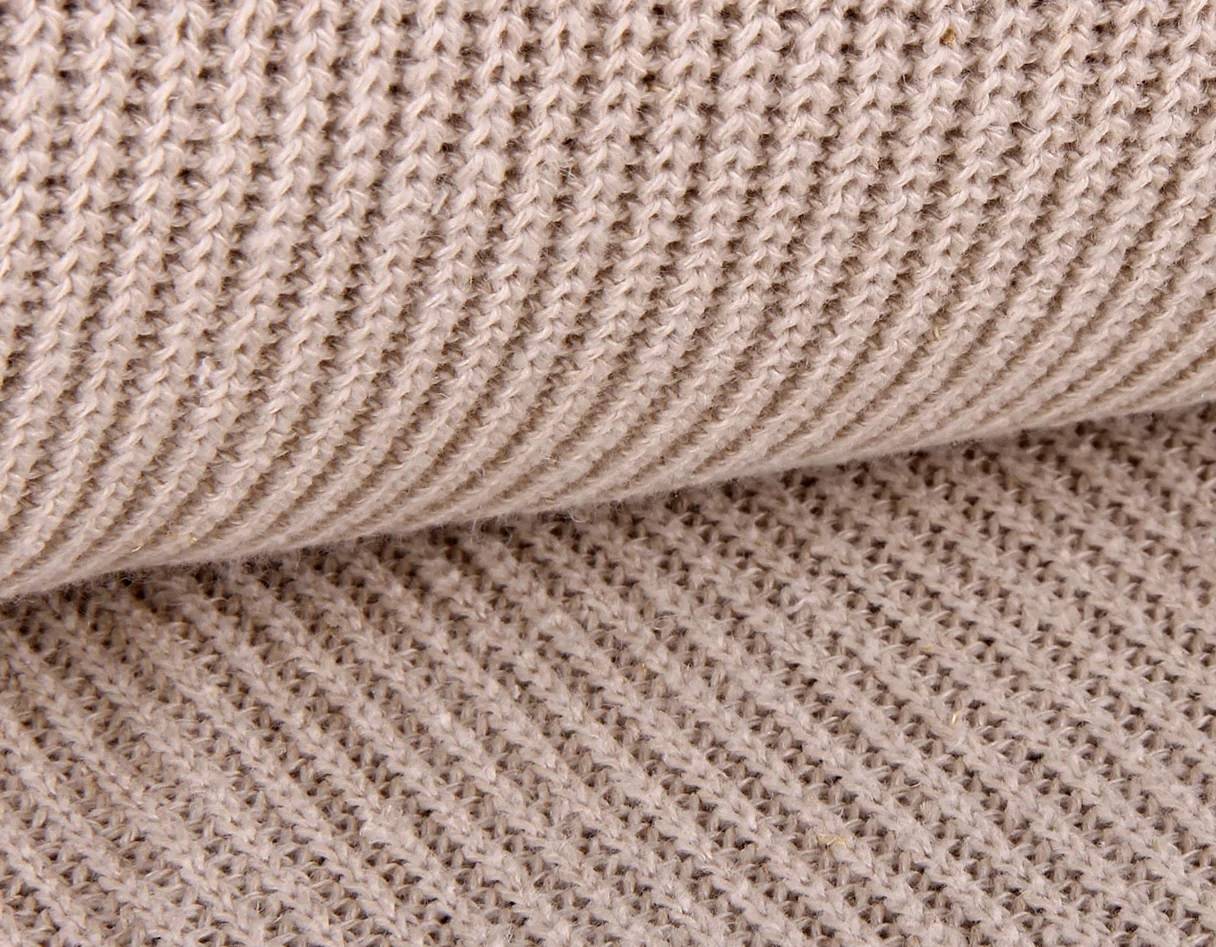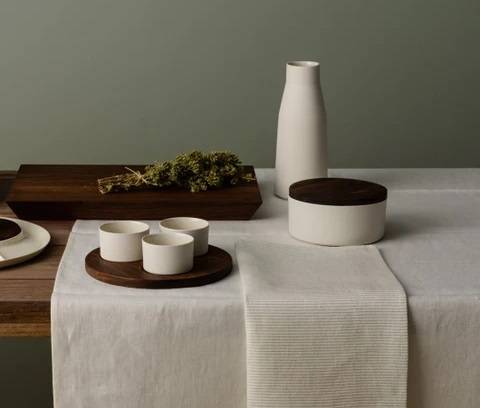Hemp fabric is very soft but also quite durable, as the fibers from this plant are long and tough. It is known for becoming more delicate and more comfortable over time. While a regular cotton T-shirt lasts 2-3 years at most, a hemp T-shirt may last double or triple that period.
HEMP MATERIAL 101
What is Hemp Fabric
Usage, Properties, Advantages & Disadvantagese

People are turning to industrial hemp as a possible greener alternative as they become more conscious of the environmental implications of conventional materials like cotton. Hemp fabric is a natural textile derived from the Cannabis sativa plant's stems. Everything from T-shirts to undergarments is now made from hemp cloth.
Hemp has a dual appeal: it is an environmentally friendly fabric that provides significant benefits to the user. The material is biodegradable and one of the strongest textiles, making it excellent for use in apparel. It offers high insulating, UV protection, and anti-bacterial properties.
What is equally important, it comes from a naturally renewable source. Although the production is labor-intensive, industrial hemp is considered one of the most sustainable crops worldwide.
With the signing of the 2018 United States Farm Bill, the popularity of the woven hemp fabric rose. Hemp's future also appears promising, as its applications extend beyond clothing materials.
Table of Contents:
What is Hemp Made Of?
How is Hemp Fabric Made?
What is Hemp Fiber Used For?
Hemp Fabric Properties
How to Care for Hemp Material Clothing?
FAQs
Hemp Clothes and Textiles at Hemptique
Welcome to Hemptique, the best range of hemp clothing and accessories on the planet. Hemp is a versatile natural fiber with a variety of uses. Hemp clothing can be as soft and comfortable as cotton, but unlike cotton, it will not shrink or fray. It is naturally resistant to mold and insects, making it perfect for active wear. With our quality materials, you won't need to worry about your hemp clothes ripping, shrinking or fading. Our products are naturally sourced, cruelty-free and ideal for both men and women.
For more information about hemp woven fabric, knit fabric or how to apply for a wholesale account, call 1-760-602-4864. Ext. 403 and 405. Sustainable fashion is here to stay with Hemptique!
For more information about hemp woven fabric, knit fabric or how to apply for a wholesale account, call 1-760-602-4864. Ext. 403 and 405. Sustainable fashion is here to stay with Hemptique!
What is Hemp Made Of?
The stems of the Cannabis Sativa plant are used to make hemp cloth or textile. The Cannabis Sativa fiber used in eco-friendly clothing has a minimal THC content. Cultivators purposefully lower their crops' levels of psychoactive THC. The technique of breeding this variety results in stronger fibers for fabrics and apparel. Industrial hemp is the name given to the cloth produced as a result of this process.
How is Hemp Fabric Made?
Hemp has been grown by humans since ancient times. The cultivation of hemp for seeds differs from the production of hemp for fiber. Farmers sow 300,000 plants per acre close together for fiber production. This equates to around 150,000 plants per acre in terms of seed production. The plant is harvested using special machines during the early to the mid-flowering stage. Some studies reveal that fibers from female plants are a bit stronger, while the male thread is finer.
After harvesting, the stem is placed on the ground for several weeks. This process is called dew retting and serves to decompose the pectin, a substance that binds the hemp fiber. They are baled and sent to a different place for processing when they reach a moisture level of 12%. Also, some use alternative retting techniques involving water or chemicals. It is much faster but not so eco-friendly as dew retting.

After removing the fibers from the woody core, the farmers form them into bales. After that, they pull the fibers out of the field to be processed into yarn. Chemical or mechanical procedures are currently used to soften and increase the flexibility of the fibers. On the other hand, some manufacturers just spin the fiber without further treating it.
To assure fabric softness, lignin had to be removed from hemp fiber. Lignin is an organic substance found in large amounts in wood and gives plants their woody appearance. This component increases a plant cell wall's rigidity. The scratchy and rough texture of traditional hemp fiber is also due to lignin. This gives the hemp cloth its strength and toughness. The lignin is removed from hemp fabrics to make them feel softer and smoother.
Then, the fibers are spun and twisted together by special machines to generate long threads that are woven into fabrics. Blending, in which additional fibers are added and blended with the hemp before turning it into hemp clothes, can occur at this point. To do this, manufacturers traditionally employed a hand-spinning method. The distaff and the drop spindle were the tools they utilized.
To assure fabric softness, lignin had to be removed from hemp fiber. Lignin is an organic substance found in large amounts in wood and gives plants their woody appearance. This component increases a plant cell wall's rigidity. The scratchy and rough texture of traditional hemp fiber is also due to lignin. This gives the hemp cloth its strength and toughness. The lignin is removed from hemp fabrics to make them feel softer and smoother.
Then, the fibers are spun and twisted together by special machines to generate long threads that are woven into fabrics. Blending, in which additional fibers are added and blended with the hemp before turning it into hemp clothes, can occur at this point. To do this, manufacturers traditionally employed a hand-spinning method. The distaff and the drop spindle were the tools they utilized.
What is Hemp Fiber Used For?
Textiles
Textiles have been made from hemp fiber since ancient times. It is less expensive than most organic fabrics and far more environmentally friendly than chemically manufactured textiles. Hemp cloth is also suitable for sensitive people and does not create allergies. We have an heirloom from civilization's past that demonstrates how diverse artistry existed to create exquisite hemp textiles. Hemp fabrics are frequently embellished with ornate designs and patterns to make them unique.
Shoes
Hemp fibers have been used to build shoes that give both comfort and durability, as strange as that may sound. Shoes bear the majority of our weight and wear out quickly. Leather is a material that has been used for a long time to manufacture long-lasting shoes. However, leather, which is essentially processed animal hide, is expensive, and the process of making leather from animal skin is not only time-consuming but also pricey. As a result, choosing a less costly and more environmentally responsible choice is critical. Hemp fibers are a far better solution than synthetic materials like rubber or reusable polymers like plastics, which numerous designers and shoemakers have tried.
Ropes & Cords
Hemp fibers can be used to produce ropes and cords because of their high tensile strength. Hemp was an easily available fiber for making ropes, which was a common product. Although other fibers, such as coconut and jute fibers, have been used for biodegradable ropes, nothing compares to hemp. Ropes and coils have also been used to create stunning works of art, like macramé. Ropes are not just woven to tie or hang objects; they have also been used to make ornate artifacts. Hemp ropes have also been utilized in the past for similar purposes. With the world of hemp fibers, we are witnessing a new age in design. Experts believe this versatile resource will be used in more and more products as the modern world seeks out new ecological materials.
Paper
Hemp fibers are most commonly used for creating paper. This resulted in widespread deforestation. Hemp fibers aid in the resolution of this issue. Because hemp is fairly simple to grow and not expensive to cultivate, it may be used as a raw material to make high-quality paper sheets. This would serve as an organic and natural supply of paper, one of the most important materials in daily living.
Hemp Fabric Properties
Considered an environmental 'super fiber,' hemp creates some of the most eco-friendly textiles in the world. It produces far more fiber per acre than both flax and cotton. Let us show you some of its advantages:
- Strong and durable: It can last an extremely long time without degrading. It also gets softer with each wash while maintaining its toughness.
- No stretching: Hemp fibers stay tight and can bear more pressure and tension than cotton. This is ideal for upholstery or other applications where cloth must be held tightly.
- Blocks UV rays: Based on fabric testing, the UV blocking efficacy was 50% higher than polyester.
- Biodegradable: It is completely biodegradable; it can even be composted.
- Hypoallergenic:It is suitable for sensitive skin, as it does not cause skin irritation or itching.
- Sustainable: The production of hemp fabric does not need harsh chemicals like artificial fertilizers, pesticides, or fungicides.
- Breathable: The porosity structure of hemp fabric allows air circulation. While also acting as an insulator, it keeps you cool in the summer and warm in the winter.
- Anti-microbial: The hollowness of the fiber allows oxygen to circulate, preventing anaerobic germs from growing in perspiration. As a result, hemp materials produce less odor when you sweat.
- Absorbent: The porosity of hemp gives the fibers a lot of absorbency. This is perfect for towels and athletics since it naturally draws moisture away from the skin, keeping you dry.
Now, let's look at some hemp fabric disadvantages:
- Textured feel: Hemp is not as soft as cotton, and some people find it rough on their skin. It does, however, become softer with each wash. For a smoother texture, some manufacturers mix it with other fabric types, usually with cotton.
- Easy wrinkling: Hemp is prone to wrinkles. As a result, when washing and drying this cloth, extra caution is required.
- Cost: Hemp cloth is not as widely used as other materials such as cotton or linen because of the slightly higher price
- Not colorfast: It does not offer rich colors.
- Odor: Pure hemp fabric has a distinctive smell, so using bleach is required to make hemp usable.

How to Care for Hemp Material Clothing?
Using hemp clothes, you can actually get several wearings from one cleaning due to its durability and natural odor-resistance.
Washing
- It is highly recommended to wash rather than dry clean your hemp apparel.
- When washing hemp, use a gentle wash cycle or hand wash with a small amount of soft soap.
- Before placing sensitive hemp items in the washing machine, place them in a lingerie bag. Use cold, not hot, water to warm up. You should wash colored hemp in cold water.
- We advise against using bleach, but if you must, use oxygen bleaches (hydrogen peroxide) on bleached or semi-bleached hemp. Chlorine bleaches can discolor the cloth and harm it; thus, you should avoid them.
- If you are washing by hand, be sure to rinse well. Removing all soap will help prevent huge brown patches on hemp produced by cellulose oxidation and induced by leftover soap.

Drying
- The best way to dry your hemp clothes is to hang them out to dry in the sun. When drying on the line or flat, stretch or spread the fabric to avoid creases as it dries.
- When drying clothes in the machine, keep an eye on the clock! Broken fibers and threads will result from over-drying.
- Using a low heat setting, tumble dry until slightly wet. Remove as soon as possible and smooth with a warm iron. Bring the hemp in while it is still moist, no matter what method you employ. Hemp can become brittle if it dries completely, and it can take several hours to regain its natural wetness and suppleness.
- If you use a cool dryer, toss in a few dryer balls or tennis balls to speed up the process. This is especially useful for items that have not been colored.
- If you are washing by hand, be sure to rinse well. Removing all soap will help prevent huge brown patches on hemp produced by cellulose oxidation and induced by leftover soap.
Ironing
- Ironing is typically unnecessary when clothes are dried flat or tumbled at low heat. Ironing hemp apparel is easier if you do it while it is still damp.
- To bring out the sheen, iron on the wrong side first, then on the right side, especially with light-colored hemp. For the darker-colored hemp, iron it on the wrong side only.
- A little higher temperature setting may be required for heavier fabrics.
- When ironing embroidered hemp, press the item on the wrong side over a soft towel to maintain the embroidery stitches rounded and dimensional. To protect delicate lace and cutwork, use a press cloth. You can use a press cloth to prevent press marks on hems, seams, and pockets.
- You can reduce creasing in ironed tablecloths by rolling them around a tube or hanging them.
- After removing the wrinkles, hang the hemp item to dry completely.
FAQ
Is Hemp Fabric Soft?
Is Hemp Natural Or Synthetic?
Synthetics, unlike natural fibers, are retrieved from deep inside the Earth, removing the farmer from the equation. Hemp, on the other hand, is renewable, biodegradable, and environmentally friendly. Hemp fibers are among the strongest natural fibers in terms of mechanical qualities.
What Makes Hemp a Sustainable Option?
Hemp is a natural plant fiber produced from the Cannabis plant's stems. Hemp is the least unfriendly to the environment in terms of sustainability. Hemp is a low-water crop that replenishes soil nutrients and helps to promote soil health. It is also biodegradable and one of the more durable textiles, so we have:
- Less water usage
- Zero chemicals
- Zero waste
- Incredible yield
- Soil health
- Carbon positive






